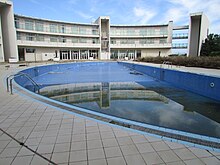This article needs additional citations for verification. (May 2012) |

| Part of the common law series |
| Tort law |
|---|
| (Outline) |
| Trespass to the person |
| Property torts |
| Dignitary torts |
| Negligent torts |
| Principles of negligence |
| Strict and absolute liability |
| Nuisance |
| Economic torts |
|
| Defences |
| Liability |
| Remedies |
| Other topics in tort law |
|
| By jurisdiction |
| Other common law areas |
The attractive nuisance doctrine applies to the law of torts in some jurisdictions. It states that a landowner may be held liable for injuries to children trespassing on the land if the injury is caused by an object on the land that is likely to attract children.[1] The doctrine is designed to protect children who are unable to appreciate the risk posed by the object, by imposing a liability on the landowner.[1] The doctrine has been applied to hold landowners liable for injuries caused by abandoned cars, piles of lumber or sand, trampolines, and swimming pools. However, it can be applied to virtually anything on the property.
There is no set cutoff point that defines youth. The courts will evaluate each "child" on a case-by-case basis to see if the "child" qualifies as a youth. If it is determined that the child was able to understand and appreciate the hazard, the doctrine of attractive nuisance will not likely apply.[2]
Under the old common law, the plaintiff (either the child, or a parent suing on the child's behalf) had to show that it was the hazardous condition itself which lured the child onto the landowner's property. However, most jurisdictions have statutorily altered this condition, and now require only that the injury was foreseeable by the landowner.
- ^ a b Cotten, Doyice; Wolohan, John T. (2003). Law for Recreation and Sport Managers. Kendall/Hunt Publishing Company. pp. 208–. ISBN 9780787299682. Retrieved 9 November 2014.
- ^ Holland V. Baltimore & Ohio Railroad Co. 431 A.2d 597 (D.C. 1981).